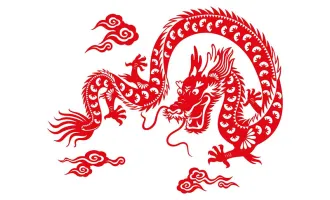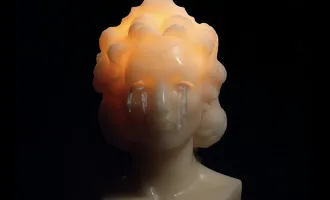
Dior in San Francisco
This is part 2 of our limited series on the celebrated haute couture designer, Christian Dior.
Out of all the museums in the world, I never would have expected our very own de Young in San Francisco to be the home of Venus and Junon, Christian Dior’s breathtaking ballgown showpieces.
But there it was, in a documentary of the Musée des Arts Décoratifs exhibition named “Christian Dior, Couturier du rêve,” or “Christian Dior, Designer of Dreams.” What I had spotted was the de Young Museum’s return address on the crate, featured in the video’s “Unboxing Venus” scene.
I was pleasantly surprised at this— because when I think of “haute couture,” or high fashion, I don’t really think of the West Coast, let alone San Francisco.
However, all this time, two of Christian Dior’s finest pieces had been hiding in plain sight at the city’s Fine Arts museums. Upon further research, I was even more surprised to discover that I.Magnin & Co., San Francisco’s historic high-end retailer, had personally presented the couture gowns to de Young in 1949, therefore making the museum the sisters’ first home.
I never would have guessed that a designer like Christian Dior forged such a strong relationship with a San Francisco company — a relationship so strong that he trusted the city with some of his most ambitious creations. However, the surprising history of Venus and Junon was just one out of the many interesting things that I learned from the documentary.
The actual exhibition, which was held to honor the House of Dior’s 70th anniversary, ran at Paris’s Musée des Arts Décoratifs from July 5, 2017 to January 7, 2018.
Featuring the grand couture works of Dior and his successors, it saw nearly a million visitors during those seven months, drawing lines so long that they spilled out into the Rue di Rivoli. Then, after the huge success in France, it was staged at London’s Victoria and Albert Museum from February 2, 2019 to September 1, 2019.
There, it attracted more than half a million visitors, breaking a V&A attendance record. And most recently, the exhibition was shown at Shanghai’s Long Museum West Bund from July 28, 2020 to October 4, 2020.
The tribute to Dior’s legacy remained key no matter where the showing was held. However, each location was able to add its own unique cultural elements, from a display of Princess Margaret’s custom-made, 21st birthday Dior dress at the V&A, to a variety of specially-made sculptures by Chinese artists at the Long.
In April 2020, the official Christian Dior YouTube channel uploaded an hour-long documentary of the famous exhibition. It included curator interviews, behind-the-scenes features, and virtual showings of the exhibition “rooms,” drawing viewers into both the journey and the finished experience.
Best of all, though, it allowed audiences from all over the world to see the magic of Dior even amidst a world pandemic.
I’ve seen the virtual tour twice already, and each time, I’ve (metaphorically) walked away with something new to think about.
Though I loved seeing all the beautiful pieces in the footages of the finished showing, I was more drawn to the larger meaning of what the exhibition was really trying to show. It wasn’t just an inflated, larger-than-normal runway show — rather, it was showing us Dior’s vision, and Dior’s world. And Dior’s world, as we shall see, is more than just a collection of pretty dresses.
The Man Behind the Legend
It was immediately clear to me that the aim of the Paris exhibition documentary was, first and foremost, to show Christian Dior as a person, rather than as just a name.
He wasn’t always simply a brand on the label of a gown, or an inscription on the tag of a handbag. Rather, he was somebody who saw the world around him with an open mind, and who wasn’t afraid to challenge the status quo, regardless of the times.
It all had to start somewhere. Vintage photographs and original fashion sketches throughout the exhibition “rooms” provide glimpses into his early life, and the thought behind his creative processes.
As a child, Dior was drawn to the arts, especially architecture, and made pocket money by selling his fashion sketches on the streets. The sketches, though rudimentary at the time, would later morph into bigger, more full-fledged visions that would distinguish him as a true designer.
But that trajectory was not without hard work. After Dior left school in 1928, his father gave him some money to run a small art gallery. Due to financial difficulties from the Great Depression, though, it shut down three years later, along with the downfall of his family’s business. Nearly a decade later, he took up work as a designer for couturier Robert Piguet, who soon became a close mentor and friend. Under Piguet, Dior was eventually entrusted to create three collections, which allowed him to further hone and explore his design skills. He left the job in 1940 to serve in the military, and upon returning, became a designer for the Lucien Lelong fashion house.
In 1946, Dior was approached with the opportunity to design for another couturier — Philippe et Gaston — however, this time, he declined. He was now ready to create his own couture house. And so, in December of that year, he founded the House of Dior at 30 Avenue Montaigne in Paris. He presented his first haute couture collection, named “Corolle,” in February 1947. However, Carmel Snow, the editor-in-chief of Harper’s Bazaar at the time, called it “The New Look,” and that was the name that stuck.
Next week: How "The New Look" revolutionized fashion.



